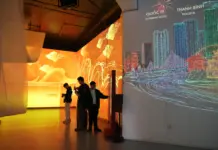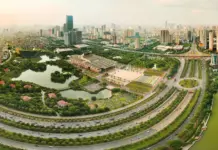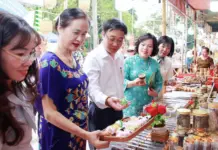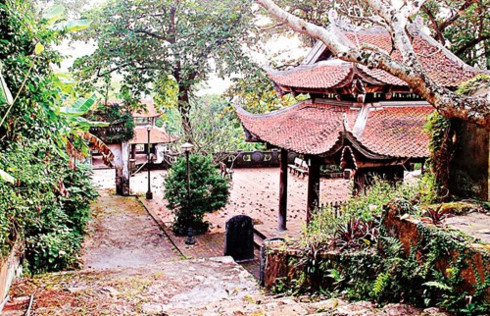 |
|
Doi Son pagoda (Photo: qdnd.vn) |
Dubbed the most beautiful scenic spot in the Red River Delta, Doi Son pagoda was built in the 11th century when Buddhism most flourished and was considered the national religion.
In 987, King Le Dai Hanh tilled the field at a festival in Ha Nam province to promote land reclamation and agriculture. This area is home to the meandering Chau river on its left and the magnificent Doi mountain on its right, which according to fengshui, resembles nine dragons looking toward the same direction.
In 1054, King Ly Thanh Tong ordered to build the Doi Son pagoda here. The original nine wells, which are considered the nine dragon eyes, have always filled with turquoise water until today.
Pham Xuan Thanh, Director of the Ha Nam provincial museum, said, “Doi Son pagoda was built from 1054 to 1058 under King Ly Thanh Tong’s rein, but only became popular thanks to his successor King Ly Nhan Tong, who expanded the pagoda complex and ordered a grand pagoda and stupa erected atop Doi mountain to worship the Buddha.”
“Shortly after its completion, the new Doi Son pagoda became a major scenic spot and became involved the royal functions of the Ly feudal dynasty.
The Doi mountainside is steep but the peak is flat. King Ly Nhan Tong chose this spot because he thought this place connected human beings with nature and had military and political strategic importance,” he added.
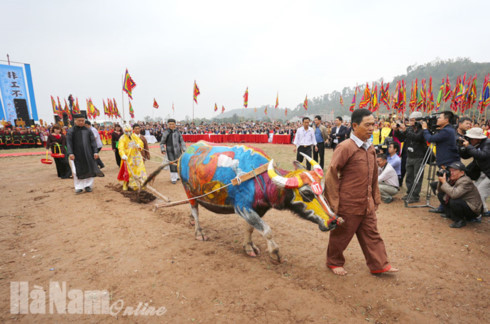 |
| Ha Nam residents reenact the scene of King Le Dai Hanh ploughing the field at a local festival. (Photo: baohanam.vn) |
The pagoda complex was destroyed 300 years later by the Chinese Ming invaders and restored in following dynasties.
It underwent a major restoration in 1860 and was greatly expanded to 125 halls four years later with a bell tower, a triumphal arch, a Buddhist stature, and stone and bronze decorations to become the biggest Buddhist center of northern Vietnam of the period.
Doi Son pagoda features the typical architecture of the Ly dynasty. Two large corridors connect the front and rear halls, which together form a square with an incense burner at its center.
A 300-step staircase leads visitors from the foot of the mountain to the three-door entrance gate and a large yard before reaching the houses dedicated to worshipping Buddhas and the Ly kings.
There are precious statues found in the houses of worship and along the two corridors.
Cao Van Thang, a tourist from Hanoi, said, “I’ve visited numerous pagodas across Vietnam, but Doi Son is one of the most impressive thanks to its antiquity and embodiment of the Vietnamese culture.
This is the first time I have seen an epitaph dating from 1054, which has just been discovered and brought here. This place tells us about Vietnam’s traditions.”
The pagoda honors ten master monks who preached Buddhism and inclined people toward the good according to Buddhist teachings.
It hosts a festival from the 19th to the 21st day of the third lunar month to pay tribute to those who had made significant contributions to the country, such as Buddhist monk Thich Chieu Thuong, General Ly Thuong Kiet, and King Ly Nhan Tong.
Superior monk Thich Thanh Vu, Abbot of Doi Son pagoda, said, “Doi Son pagoda and its festival honor the historical, cultural and economic achievements of the Ly dynasty, which have been preserved till this today. It teaches us valuable lessons of sincerity and honesty.”
Doi Son pagoda was recognized as a national special relic site in December, 2017. VOV5

